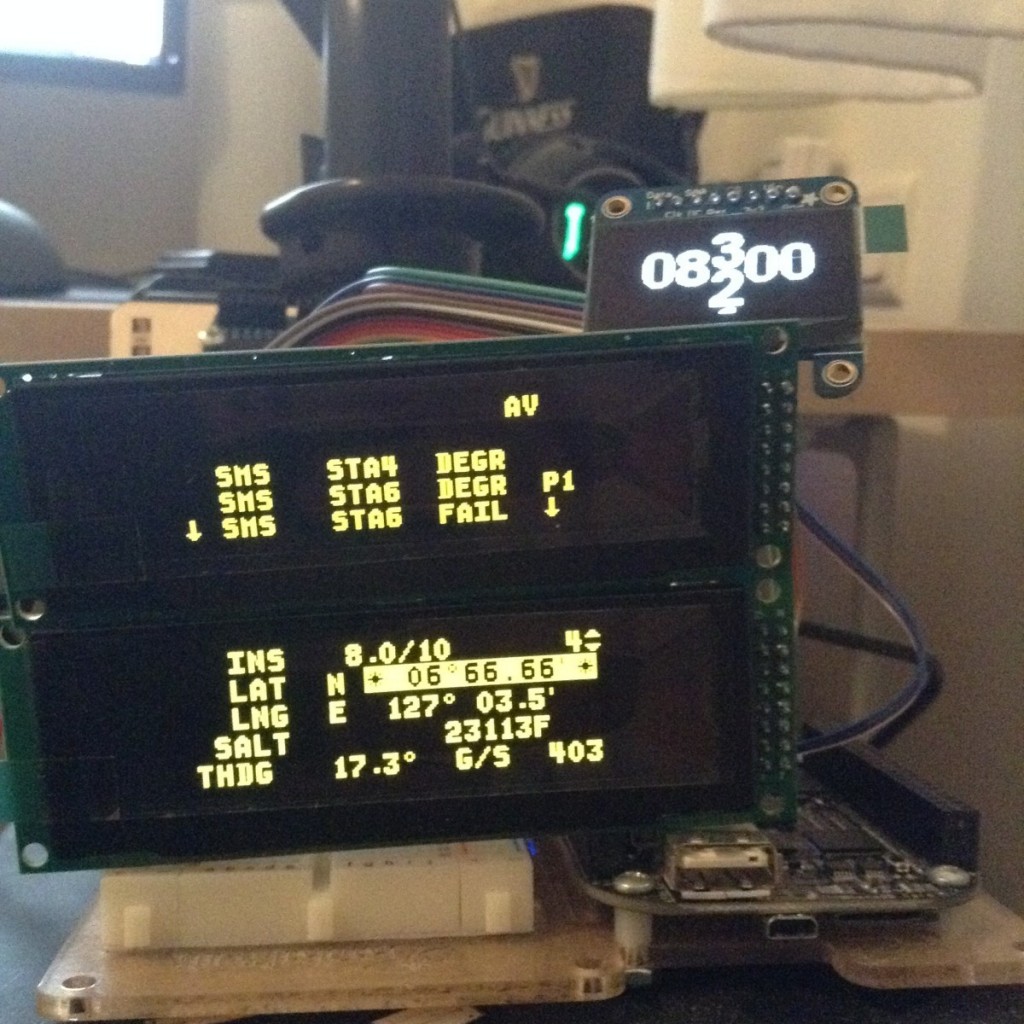Now that we have seen the Caution panel at work,
Let’s take a step back and have a look at the technical aspect of it.
This post will have some code samples and inner workings – so feel free to move on if that doesn’t interest you.
Now that we have seen the Caution panel at work,
Let’s take a step back and have a look at the technical aspect of it.
This post will have some code samples and inner workings – so feel free to move on if that doesn’t interest you.
We’ll after we got the DED and FuelFlow sorted out it’s time to think on how to get everything packed for the real pit installation, in addition, when we have things running we get a better clue on available memory and CPU cycle limit. When I’ve changed the way the DED worked, I suddenly realized I’ve cleared the exact amout of memory to drive a second DED, or to be more precise, to drive the PFL. The PFL is identicle to the DED in size and resolution, the the adaptation was very easy, on the PC side of things, PFL uses exact same structure in the SharedMem. so it’s a matter of reusing the DED code.
//PFL Lines
char PFLLines[5][26]; //25 usable chars
char PFLInvert[5][26]; //25 usable chars

Once we have that done, we can get some more thought into final solution. I’ve decided to start with the small scale, the Indexers.
OK, So we got the DED and FuelFlow sorted out. we got a way to get the data over and drive the screen. Before we go on, let’s talk a bit about Arduino boards.
Arduino Boards are ATMEGA based development board, putting the I/O pins available for quick connections. Basic Arduinos traditionally have 13 available digital I/O pins and 6 ADC 10bit “analog” Inputs.
the “classic” arduino board is the Arduino Uno.
Based on the ATMEGA328P, a 16MHZ, 2K RAM chip that uses an on-board RS232 chip to handle serial communication via 2 of the 13 IO pins. I’ve done my initial prototyping work on this board and it works with comms of up to 96000 baud reliably. you might start catching some errors but YMMV.
on the other side of the scale there is the Arduino Due.
the Duo is ARM based 84MHz chip with 96k RAM, it has 54 IO pins, 12 ADC pins and so on. it’s bigger then the Uno.
in the middle this is the Leonardo, it’s about the same size as the Uno, but uses a different Chip, the ATMEGA32u4. However, it’s his little brother the Arduino Micro, is the one I’ll focus about. the 32u4 is pretty much identical to the 328P with a few exceptions, it has 2.5K of RAM, a bit more I/O pins, but the most important feature on the chip is that it has native USB capability, which means it can do serial communication much faster then the Uno. the added bonus is it’s size, the Micro is TINY, it’s slightly less the 5cm long, and has male headers in two rows, which makes it breadboard compatible, and allows an easier mounting . So I chose it and everything I wrote was Micro Optimized. However I do indend to try and make the code in an Uno version (but with diminished capability) and in Due version (as Acef already has on – so why not).
And back to the design..
Let’s talk about a bit about the technical stuff. I think that going over the technical aspects will make some sense, and naturally help others in their quest.
I’ll have posts like that from time to time, covering technical aspects of the project. Which means that code examples, circuit schematics and random technical mambo jumbo are all legit in this type of posts.
So lets begin….